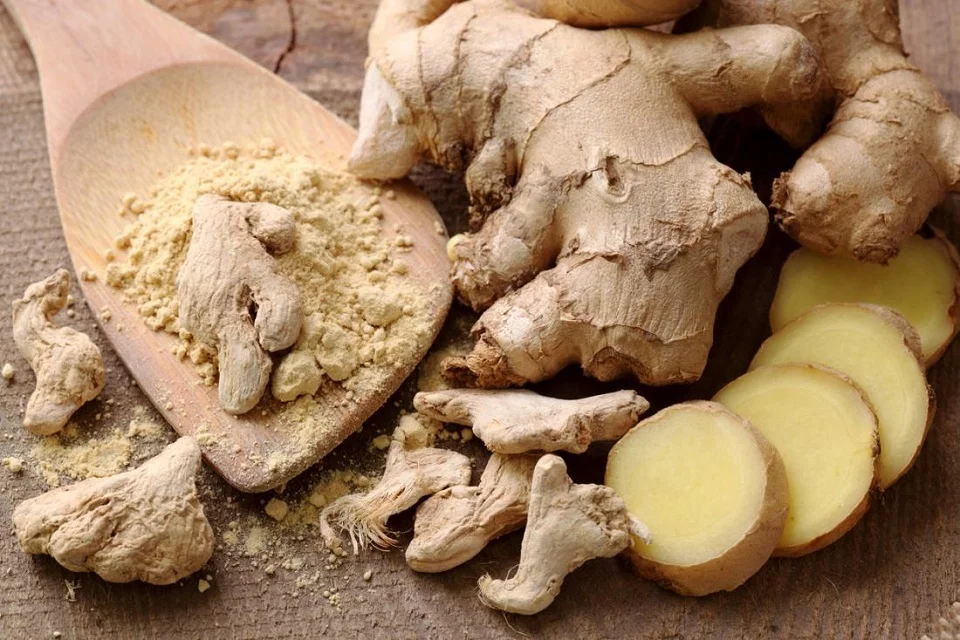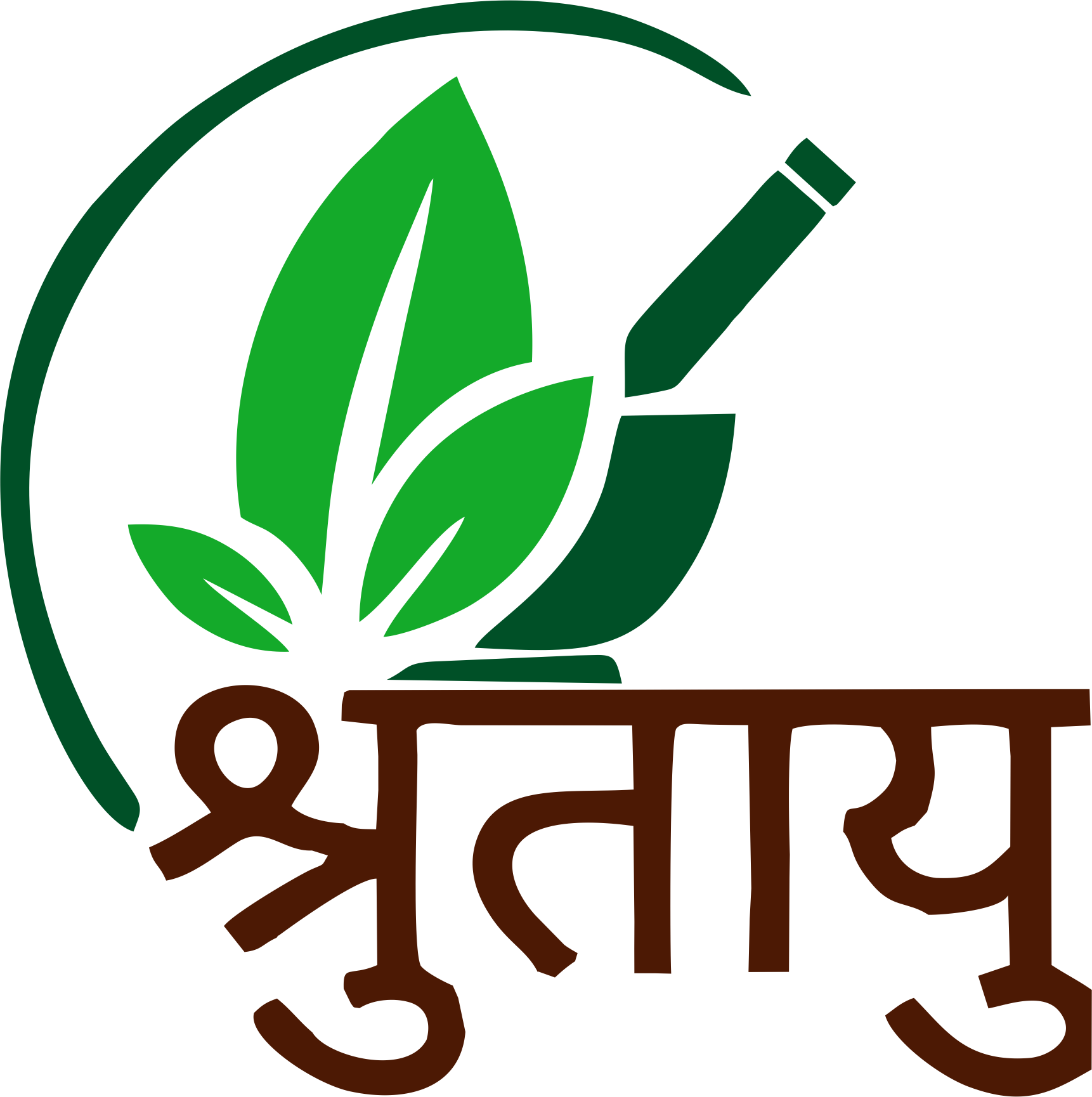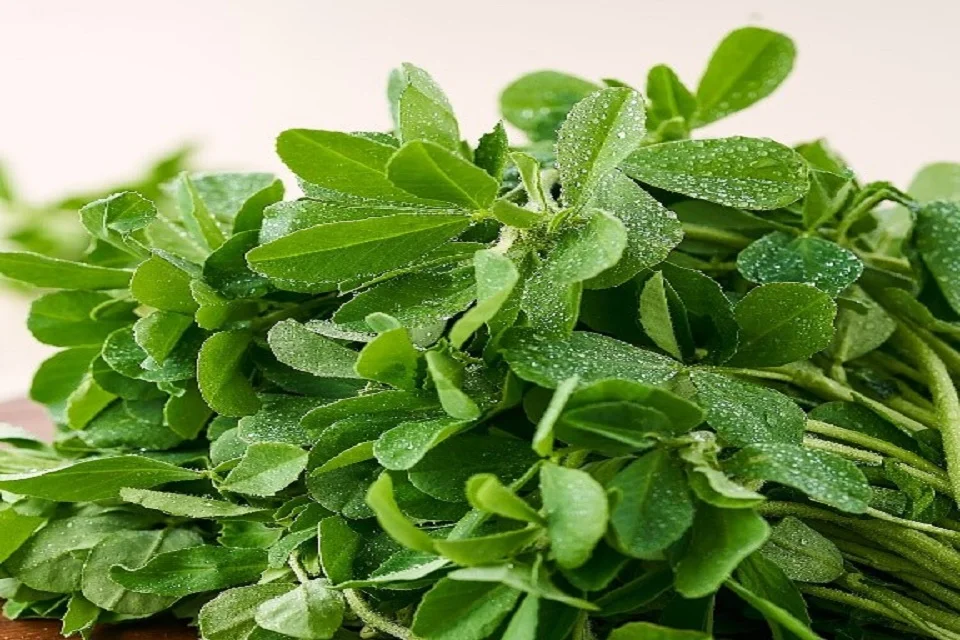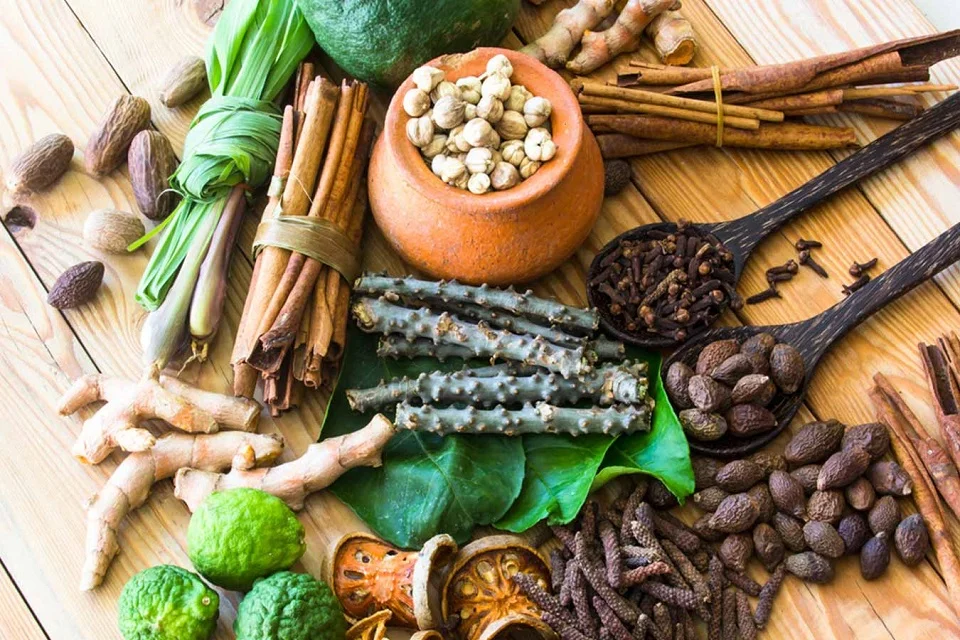Adrak benefits, dosage, side effects, and how to use it?
What is Adrak? Adrak also known as Sunthi and Ginger in English. It is very well cultivated and one of the …

What is Adrak?
Adrak also known as Sunthi and Ginger in English. It is very well cultivated and one of the best home remedies for many health problems. Sunthi is known for its distinctive flavor and aroma and is used in various cuisines around the world. It is specifically used for digestive disorders and inflammatory conditions. Adrak is observed that Adrak is considered as Vibandhar but also indicated for Atisara.
Adrak in Ayurveda
Ardrak is delineated in Agniveśa Grhyasūtra Jaimini Brāhmaņa quotes the name Śrngabera. Suntha or Sunți described in the Guhya Sutras is considered as a type of Grass but not ginger. Ardraka and Sunțī are relatively new names not familiar in ancient times. Mujumdar thinks that ‘Adara’ described in Rigveda may be Z. officinale. Viśvabheșaja term is used for water and rice in Rgveda (1/13/20 & 1/137/3).
What is Morphology of Zingiber officinale?

Latin name– Zingiber officinaleRoxb. (Fam. Zingiberaceae)
Zingiber officinale is an annual plant that has a leafy stem that grows 3-4 ft in height. It produces pink and white flower buds in clusters. These flower buds become yellow flowers. Ginger is basically native of Asia, But cultivated throughout world
Type of Adrak
Kaidev Nighantu described Adra Nagaram and Ardrakam separately.
- Adraka (Wet ginger)- Ruksha & Ushna- Bhedini
- Sunthi (Dry ginger)- Snigdha & Ushna- Grahi
Synonyms of Sunthi/Adrak
Mahaushadha, Nagara, Vishva, Vishvabheshaja, Shringavera, Adraka
Classical Categorization of Adrak in Samhita
- Charak:Trptighna, Arshoghna, Dīpanīya, Shulaprasamana, Trshņā nigrahana
- Sushruta:Pippalyadi, Trikatu
- Vaghbhatta:Pippalyadi
Other/Regional Language Names
- English:Ginger Root, Ginger
- Gujarati:Sunth, Sundh, Suntha
- Hindi:Sonth
- Kannada:Shunthi
- Kashmiri:Shonth
- Malayalam:Chukku
- Marathi:Sunth
- Oriya:Sunthi
- Punjabi:Sund
- Tamil:Sukku, Chukku
- Telugu:Sonthi, Sunthi
- Urdu:Sonth, Zanjabeel
- Assamese:Adasuth, Aadar Shuth
- Bengali:Suntha, Sunthi
Constituents of Zingiber officinale
6-Shogaol, 6-gingerol, -bisabolene. Gingerenones A, Bb-zingiberene, arcurcumene, a- phellandrene, bzingiberol, & C, isogingerenone B, hexahydrocurcumin, diaryl heptanoids, gingerdiols, 6-gingesulfonic acid, gingerglycolipids A, B & C, gingerenones, -D-glucopyranoside,b(+)-angelicoidenol-2-O- -eudesmol,b-santalol, geraniol glycosides, nerolidol, farnesol, lemon, neral, geranial, -pinene, camphene, sabinene, myrcene,b- and a limonene, 1,8-cineole, aliphatic alkanes, alcohols, aldehydes, ketones, sulfides
Rasa Panchak of Adrak
- Rasa:Katu(Adrak), Madhur (Sunthi) Tikta
- Guna:Guru, Tikshna, Ruksha(Adrak), Laghu, Snigdha (Sunthi)
- Virya:Ushna
- Vipaka:Madhura
- Karma: Triptighna, Anulomana, Dipana, Amadoshaghna, Hridya, Kaphaghna, Pachana, Rucya, Vatakaphahara, Vrushya
References of Sunthi in Ayurvedic texts
स्निग्धोष्णा कटुका शुण्ठी वृष्या शोफकफारुचीन् ।
हन्ति वातोदरश्वासपाण्डुश्लीपदनाशिनी ।।
(ध० नि०, शतपुष्पादि वर्ग; 83)
शुण्ठी रुच्यामवातघ्नी पाचनी कटुका लघुः ।
स्निग्धोष्णा मधुरा पाके कफवातविबन्धनुत् ।।
(भा० प्र०, हरीतक्यादि वर्ग; 45)
What are Benefits of Adrak?
- Ginger benefits
- Agnimandya (digestive impairment)
- Adhmana (flatulence with gurgling sound)
- Amavata (rheumatism)
- Gulma (abdominal lump)
- Pandu (anaemia)
- Pinasa (Chronic rhinitis)
- Shlipada (filariasis)
- Shvasa (dyspnoea)
- Udararoga (disease of abdomen)
What is the use of Sunthi in texts?
- Adrak is given with milk in Pratishyaya
- Adraka and Kulattha are used in Kaphaj Arsha
- Adrak svarasa is used as Nasya in Murcha
How much is the Dose of Adrak as described in ancient texts?
Churna (powder): 1-3 g
Svaras : 5-10ml
Syrup : 2-4ml
What are the Useful Part of Adrak?
Kand(Rhizome)

What are the side effects of Adrak?
- In People with sensitive stomach and gastritis it should be taken with caution.
- Fresh ginger is contraindicated in Kushtha, Pandu, Mutra krchha, Raktapitta, Vrna, Jwara, Daha, Grishma & Sharad rutu.
- Side effects are of taking the drug in high doses, under the guidance of qualified vaidya, or inappropriate doses it is safe to consume.
List of formulations of Adrak
- Saubhagya sunthi paka
- Adrak khanda
- Nagaradi kashay
Research of Adrak
- Anti-Oxidative and Anti-Inflammatory Effects of Ginger
- It has shown marked anti-inflammatory activity in rats which is comparable to prednisolone (Sharma & Singh, 1980).
- In a clinical study the effect of Guduci & Sunthi Anupana while administering Simhanäda guggulu is reported (Babu, 1982).
- Clinical efficacy of a combination of potent GI stimulants consisting of Sunthi and Guduci showed better results than with conventional drugs like Yogaraja guggulu, Vāta gajänkusa and Mahārāsnādikvatha (Kishore et al., 1980).
- Crude methanol extracts of rhizome showed potent, positive inotropic effects on the guinea pig isolated left atria. This effect is found to be due to gingerols, the active principles in the rhizome (Shogi, 1982).
- Albino rats were fed with 30% of Z. officinale and Sesamum indicum (Til) separately, to study its effect on blood sugar and serum cholesterol. Blood sugar levels increased while cholesterol levels were significantly reduced in both cases (Singhal, 1983).
- In rats fed with Z. officinale along with cholesterol, the added ginger restrained the rise of blood cholesterol levels significantly. In hypercholesterolaemic rats, ginger reduced the serum and hepatic cholesterol levels significantly in 24 days (Giri et al., 1984).
- The alcoholic extract showed some significant activity against E. coli, proteus vulgaris, S. typhimurium, and Stap. aureus and Strep. viridans (Gugnani. & Ezenwanze, 1985).
- The acetone extracts of Z. officinale, which contain essential oil and pungent principles caused an increase in the bile secretion. It is also reported that 6-gingerol and 10-gingerol are mainly responsible for the chronologic effect of ginger (Miki et al., 1985).
- Bioavailability enhancer property of Z. officinale is also reported (Zutsi., 1986).
- In a clinical study on Grahani roga, the effect of Z. officinale has been found significant in terms of control of several motions, improvement of body weight, appetite, Hb%, etc. (Nanda et al., 1985).
- Observations made on 63 patients of RA indicated that Sunthi-guggulu had a better effect as compared to other drugs taken for trial. (Kishore et al., 1987).
- When (6) sho gaol, was administered (0.5 mg/kg) i.v. to rats, BP showed a triphasic response which was comprised of a rapid fall, followed by a rise and a delayed fall. Repeated injection of this natural product caused a tachyphylaxis in mesenteric and tail vascular beds, and a slight tachyphylaxis in hindquarters (Suekawa et al., 1986).
- (6)-school-induced pressor response was markedly reduced by spinal destruction at the sacral card level (Suekawa et al., 1986).
- The oral administration of acetone extract (1000 mg/kg) and zinziberene (100 mg/kg) significantly inhibited gastric lesions by 97.5% and 53.6% respectively. (100 mg/kg) also inhibited gastric lesions by 54.5% (Yamahara et al., 1988).
- Direct addition of hot water extract of Z. officinale inhibits arachidonic acid in sheep models, indicating its effect on the biotransformation of arachidonic acid (Umeda, 1988).
- The supplementation of ginger extract to the diet of normal albino rabbits showed a consistent and significant fall in serum Na levels and a consistent significant rise in levels in the control group (Pachori et al., 1989).
- The ethanolic extract showed anti-inflammatory activity in rats and hypoglycaemic effect in rabbits. The growth of both gram-positive and gram-negative bacteria was also inhibited significantly. A dose-dependent inhibition of the prostaglandin release effect was observed using rat peritoneal leukocytes (Mascolo et al., 1989).
- Acetone extract of ginger (100 mg/kg) p.o. significantly reduced serotonin (5-HT)-induced hypothermia. At 750 mg/kg po. it significantly inhibited 5-HT-induced diarrhea (Huang et al. 1990).
- A single case report (42F) on migraine headaches reveals the efficacy of Z. officinale in this condition (Mustafa & Srivastava, 1990).
- Acetone extract (150 ml/kg p.o.) and metoclopramide (25 mg/kg p.o.) administered 60 minutes before cyclophosphamide, provided complete protection from emetic episodes. 6-gingerol (25 mg/kg & 50 mg/kg p.o.), completely prevented vomiting (Yamahara et al., 1989).
- It has been reported that an acetone extract of ginger and its fractions had anti-5-HT (saponin) effects. The study results suggest that the anti-5-HT effect of galanolactore is related to the antagonism of 5-HT-3 receptors (Huang, 1991).
- Gingerols and diaryl heparinoids act as potent inhibitors of the prostaglandin biosynthesis enzyme (PG synthetase). The inhibitors would also be active against arachidonate 5-lipoxygenase, an enzyme of leukotriene biosynthesis (Kiuchi, 1992).
- The acetone and ethanol extracts of fresh rhizomes given orally inhibited gastric secretion in the pylorus-ligated rats. At a dose of 62.01 mg/kg (ED), the acetone extract was more effective than the ethanol extract and cimetidine in reducing the gastric volume. Stress-induced lesions were significantly prevented by both extracts (Sertie et al., 1992).
- Ginger juice produces anti-motion sickness action possibly by central and peripheral anticholinergic and antihistaminic effects (Qian & Liu, 1992).
- (E)-8 beta. 17-exoxylabel-12-ene-15, 16-dial (ZT) showed an inhibitory effect on the cholesterol biosynthesis (Tanabe et al., 1993).
- Sunthi was put to trial on 111 patients with Grahani roga. The effect of the treatment was observed within a short period. The regulation of bowel habits, improvement in general health including anemia and body weight, and improvement in GI function were noted (Nanda et al., 1993).
- PE extract of guar gum and EE of ginger in doses of 200 mg/kg significantly reduced the hyperlipidemia induced by feeding orally on an atherogenic diet for 10 weeks in male albino rabbits (1.5-2 kg). Both extracts also reduced the hyperglycemia induced by single i.v. injection of streptozotocin (65 mg/kg) in male albino rats (150-200 gm) (Bhandari & Sharma, 1995).
- The EE extract of the rhizomes was found to show the biphasic effect on the secretion of cytokines by human peripherals blood mononuclear cells in vitro. In this study, the augmentative effect of Zingiber rhizome extract on cytokine secretion was shown to be time-dependent. (Cheng et al., 1995).
- Administration of water and alcoholic extracts for 30 days exhibited a significant fall in the level of serum uric acid at all doses in normal albino rabbits. The alcoholic extract was found to be more effective (Maheswari et al., 1995).
- The antimicrobial activity of Z. officinale is reported (Limyati et al., 1994).
- Acitone, ethanolic extract and ginger juice have produced a dose-dependent reversal of cisplantin induced delay in gastric emptying in rats (Shama & Gupta, 1997).
- The aqueous extract of ginger arrested the growth of M. aberculosis in vivo (Usha & Saroja, 2000-2001).
- Acetone extract of rhizomes of Z. officinale is attributed to the antioxidant property (Bandyopadhyay, 2001).
Conclusion
In conclusion, Adrak (ginger) is a potent Ayurvedic herb renowned for its wide range of health benefits. It aids digestion, reduces inflammation, and boosts immunity, making it a staple in traditional medicine. Its therapeutic properties help alleviate respiratory issues, improve circulation, and combat nausea. Integrating Adrak into one’s diet can enhance overall well-being.








Got Something To Say